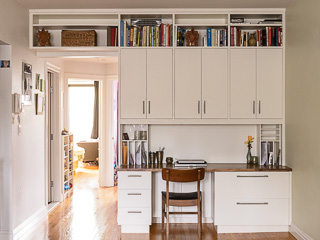WELCOME TO BEAGLE & POTTS WOODWORKING

Founded in 1986 by Marcy Pesner, Beagle & Potts has transformed from a small wood tile company to a full service custom woodworking shop. Purchased in 2011 by longtime Beagle employee Rob Pettit, it has continued to thrive and expand its horizons in the New York City area. Beagle & Potts designs and builds to each client's particular needs. Let us help you transform your space.
RAVES
Robert held my hand through the entire project from start to finish, shopped with me on several occasions for so many details in the apartment, and was as available, helpful, and as inspired as could be. He fielded seemingly endless questions with grace; he’s a rare individual with a fantastic team behind him.Amy
The whole Beagle & Potts team were very easy to work with, extremely professional and clearly take pride in making quality custom woodwork. The installation was very smooth, they did an excellent job cleaning up after themselves and patiently answered question after question from my very inquisitive 4 year old!Jamie
I felt well taken care of by Robert and his very talented, friendly, responsive team. Their rates are reasonable, they clearly take great pride in their work and are attentive to all the details.Elizabeth
Rob turned the master closet from an empty room into a functional closet where we can store all of our clothes, laundry and other items, with space left over for the future. We highly recommend him and Beagle & Potts.Alicia and Kevin













